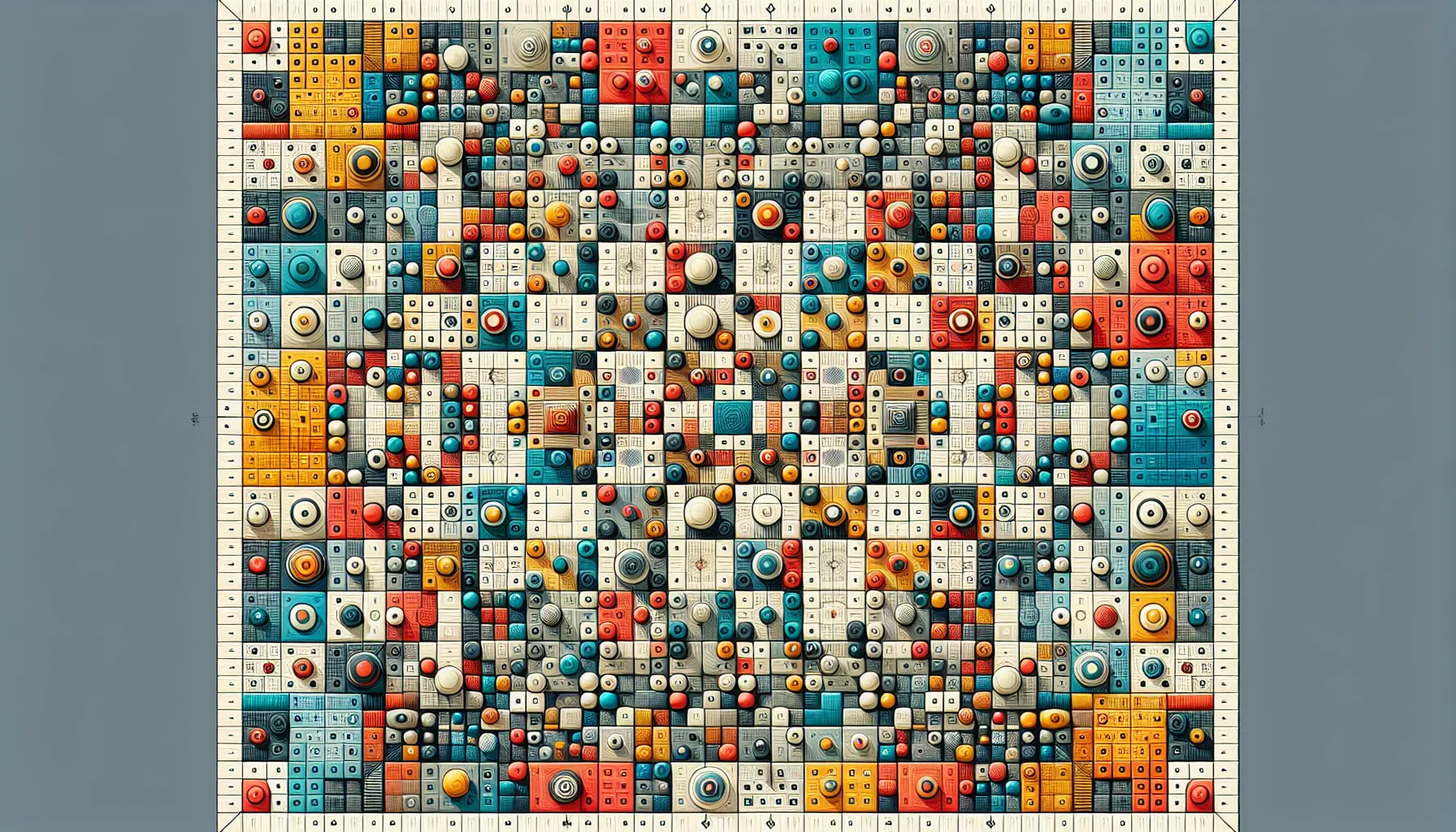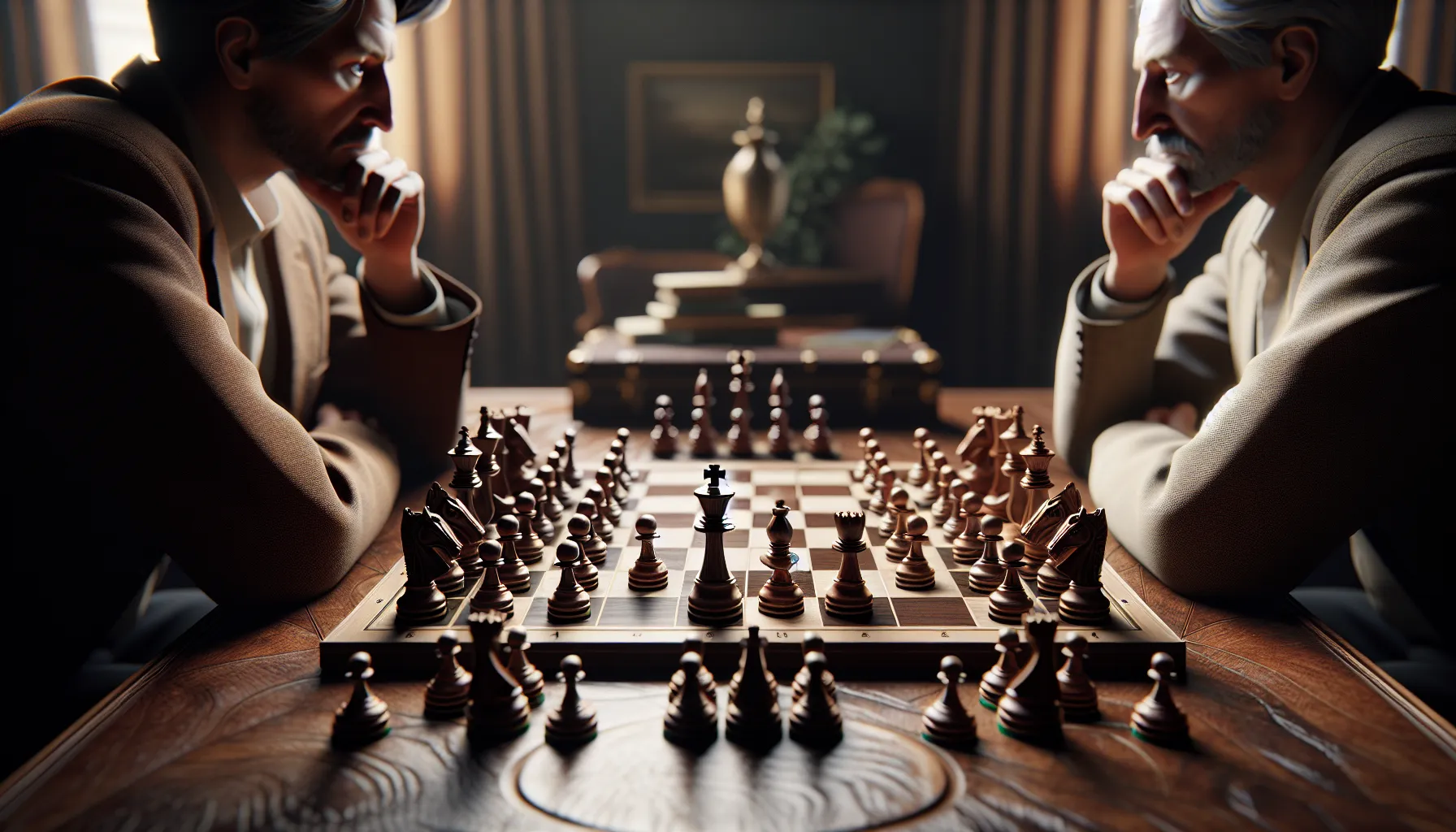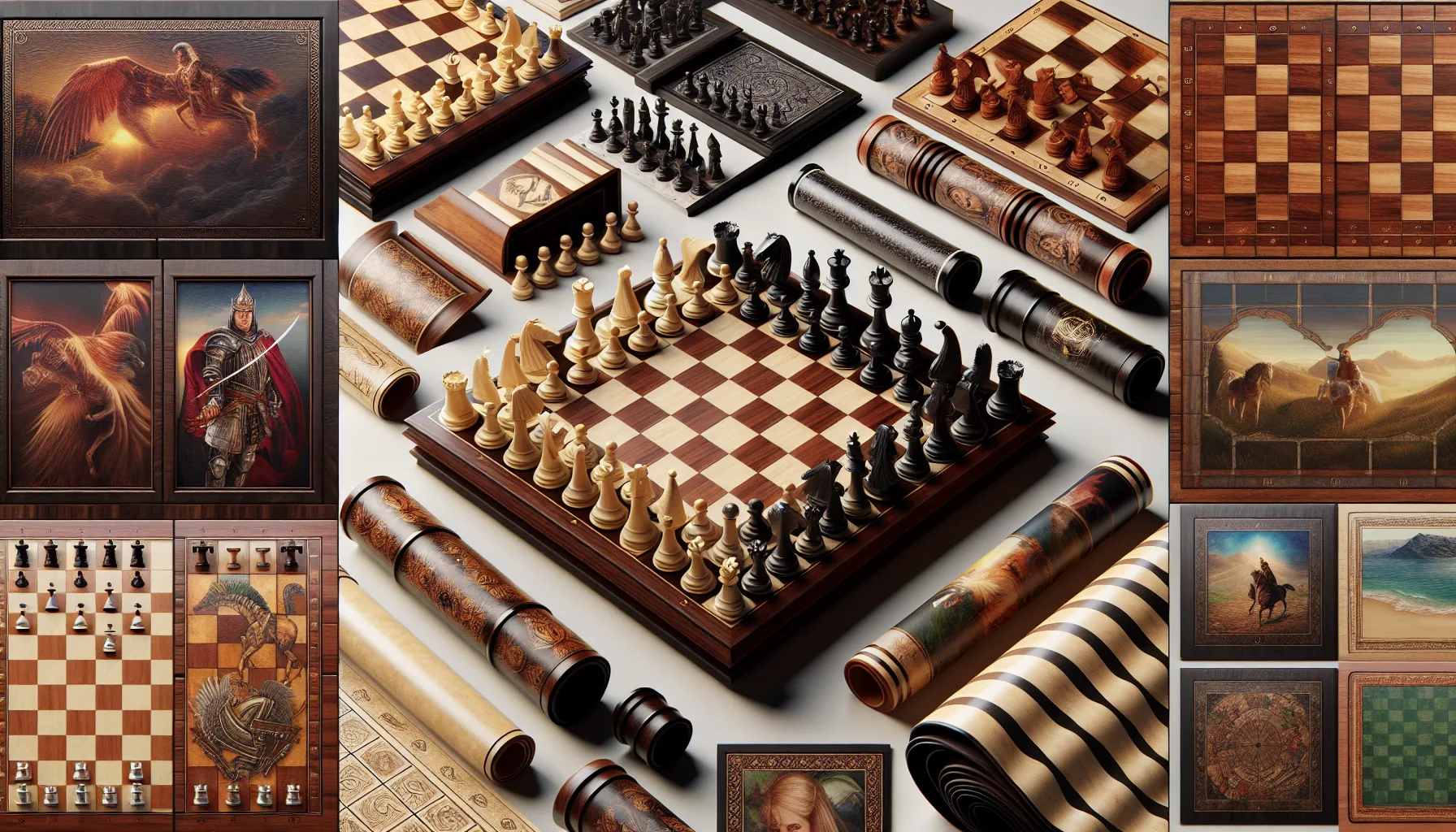Discover the Total Squares on a Chessboard

Key Takeaways
- A standard chessboard consists of 64 squares arranged in an 8×8 grid, with alternating light and dark colors critical for gameplay.
- The total number of squares on a chessboard, including all combinations of larger squares, is 204, derived using a mathematical sum of squares formula.
- Chessboards have evolved over centuries, adopting the iconic black-and-white design by the 13th century and an 8×8 layout by the 15th century.
- The chessboard’s structure is pivotal in defining strategies, influencing piece movement, positioning, and tactical decisions throughout the game.
- Variations in chessboard designs, from thematic patterns to portable magnetic boards, showcase its cultural and artistic significance beyond its practical use.
When I first laid eyes on a chessboard, I couldn’t help but be fascinated by its perfect symmetry and design. Those alternating dark and light squares hold so much history, strategy, and intrigue. But have you ever stopped to wonder just how many squares actually make up a chessboard? It’s a question that seems simple at first but can spark curiosity.
Understanding The Chessboard
The chessboard is more than just a playing field; it’s a symbol of precision and balance. Its structure and evolution reflect the game’s rich history and strategic depth.
The Basics Of Chessboard Structure
A standard chessboard consists of 64 squares arranged in an 8×8 grid. Each square alternates in color, usually black and white, creating a checkerboard pattern. The grid is divided into ranks (horizontal rows, labeled 1 to 8) and files (vertical columns, labeled ‘a’ to ‘h’), which help players identify the position of pieces. For instance, ‘e4’ refers to the square in the fifth file (‘e’) and fourth rank (4).
The board’s precise layout isn’t just aesthetic; it ensures fairness and serves as the foundation for rules like pawn movement and castling.
Historical Development Of The Chessboard
The chessboard’s design evolved alongside the game itself. Early versions, developed in India around the 6th century, featured simpler, less standardized layouts. As chess spread to Persia and then Europe, the design became more consistent, adapting to emerging rules and cultural preferences.
By the 13th century, the alternating black-and-white pattern gained popularity in Europe, enhancing visibility. The 8×8 layout became widely accepted by the 15th century to match modern chess rules. This evolution shaped the board into the iconic design we recognize today.
How Many Squares Are On A Chessboard?

A standard chessboard has more than meets the eye. While it appears to have only 64 squares, there’s more to uncover when considering different square combinations.
Total Number Of Squares
A chessboard contains 204 total squares. Beyond the 64 single-unit squares, it includes larger squares formed by combining smaller ones. For example, there are 49 two-by-two squares, 36 three-by-three squares, and so on, down to a single eight-by-eight square.
Mathematical Explanation Behind The Calculation
The total count results from summing the squares of integers from 1 to 8. For each size of square, I calculate the number of possible positions it can occupy within the chessboard. Using the formula n², where n is the size of the square, I add:
1² + 2² + 3² + 4² + 5² + 6² + 7² + 8² = 204
This process accounts for all possible squares, capturing the complete complexity of a chessboard’s structure.
Importance Of Chessboard Layout In Gameplay

The chessboard’s layout plays a pivotal role in shaping strategies and gameplay dynamics. Its 8×8 grid determines how players navigate, position pieces, and anticipate moves.
Strategy And Positioning
The symmetrical design of the chessboard ensures balanced conditions for both players. Each square, defined by its rank and file, influences how pieces move and interact. For example, knights rely on the alternating colors to execute their unique L-shaped jumps, while bishops use diagonals of matching color. Strategic control of central squares, such as d4, d5, e4, and e5, allows better mobility and tactical opportunities. The layout supports patterns like pawn structures and fortresses, crucial for long-term planning.
Influence On Player Decisions
The layout directly impacts decision-making in every phase of the game. In the opening, players aim to develop pieces effectively on specific squares to control space. During the middle game, tactical choices often depend on the positioning of pieces relative to key squares, like weak pawns or open files. In the endgame, players exploit the grid to coordinate king and pawn movements, aiming for promotion. Understanding the interplay between the board’s structure and piece placement helps in predicting opponent strategies and making precise calculations.
Fun Facts And Trivia About Chessboards

The chessboard is more than just a playing field; its design has inspired creativity and innovation throughout history. Below, I explore some unique patterns and designs that add character to this iconic grid.
Unique Chessboard Patterns
Chessboards don’t always come in the standard black-and-white checkerboard design. Historically, materials like ivory and ebony were used to create luxurious boards with high contrast. Some boards feature intricate inlays or engravings that reflect art styles from their regions of origin, such as Middle Eastern geometric patterns or Baroque motifs.
Thematic chessboards also exist, where squares are replaced with unique designs or scenes, like medieval battlegrounds or fantasy landscapes. These boards sometimes feature different color schemes, such as red and white or blue and gold, creating visually striking alternatives to the classic look. These variations highlight how chessboards can merge functionality with artistic expression.
Variations In Chessboard Designs
Over time, chessboards have been adapted to fit cultural and functional needs. For traveling players, roll-up boards made of leather or cloth offer portability, while magnetic boards keep pieces steady during movement. In contrast, digital and electronic chessboards now integrate sensors or screens to track games automatically and connect to computers for analysis.
Different chess variants, like 10×10 boards for Capablanca chess or hexagonal chessboards, challenge standard conventions with alternative layouts. These designs reveal how the chessboard continuously evolves, catering to diverse styles of play, while remaining true to its roots.
Conclusion
The chessboard is so much more than just a playing field; it’s a masterpiece of design, history, and strategy. Its 8×8 layout holds layers of complexity that continue to inspire curiosity and creativity. From its ancient origins to its role in modern gameplay, the chessboard remains a timeless symbol of balance and precision. Whether you’re a casual player or a devoted enthusiast, there’s always something fascinating to discover about this iconic grid.
Frequently Asked Questions
How many squares are there on a standard chessboard?
A standard chessboard has a total of 204 squares. This includes the 64 single-unit squares and additional larger squares formed by combining smaller ones. The total is calculated using the formula n², summing the squares of integers from 1 to 8.
What are the dimensions of a chessboard?
A standard chessboard is an 8×8 grid, consisting of 64 squares. Each square alternates in color, typically black and white or dark and light, arranged in a checkerboard pattern.
Why does a chessboard have alternating colors?
The alternating colors on a chessboard ensure clarity and fairness during gameplay. They help players easily identify square patterns and piece movement, especially for diagonals and unique piece paths like the knight’s L-shaped jump.
When was the 8×8 chessboard layout standardized?
The 8×8 chessboard layout became widely accepted in the 15th century. Earlier versions existed in simpler forms, but the black-and-white pattern gained popularity by the 13th century for better visibility.
What is the significance of the chessboard’s design in gameplay?
The chessboard’s symmetrical design ensures balanced conditions for both players. Its 8×8 grid dictates strategies, piece movements, and tactical decisions, from controlling central squares to navigating endgame challenges.
How does the chessboard influence piece movement?
Each piece is designed to move based on the chessboard’s layout. For instance, bishops move diagonally along squares of the same color, while knights jump following the alternating checkered pattern.
Are all chessboards black-and-white?
No, chessboards can vary in design. While the traditional black-and-white pattern is standard, some feature alternative colors, luxurious materials like ivory or ebony, or thematic designs to suit personal or cultural preferences.
What are some unique types of chessboards?
Unique chessboards include roll-up boards for portability, magnetic boards for travel, and digital boards that integrate technology. There are also oversized boards and themed boards made from special materials.
Are there chess variants with different board sizes?
Yes, some chess variants use different board sizes. For example, Capablanca chess uses a 10×10 board, while hexagonal chess features a hexagonal layout instead of the standard square grid.
What materials are commonly used to make chessboards?
Chessboards are commonly made from wood, plastic, or cardboard. Luxury boards may use materials like ebony, ivory, marble, or glass. Modern boards can also be magnetic or digital for enhanced functionality.